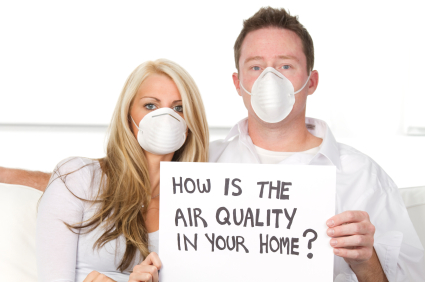Air pollution isn’t just something that affects you outside your home. Indoor air pollution can worsen allergies and may cause respiratory irritation, among other concerns. Secondhand smoke, dust particles, mold spores and other allergens are common causes of indoor air pollution. Eliminating indoor pollution can be as simple as cleaning frequently and installing a high quality air filter.

The Risks
Dust and mold spores typically cause respiratory irritation that can worsen the symptoms of existing diseases, such as asthma, and can cause minor illnesses in healthy individuals. Dust and mold are typically impossible to exclude from homes and offices, as the particles are pulled into the building through heating and cooling systems, or when doors or windows are opened.
Secondhand smoke is a serious threat to health, as smoke can be linked to some types of cancers and upper respiratory illnesses in people of all ages. To prevent the health risks associated with secondhand smoke, do not allow people to smoke inside the building or near doors. Filtering indoor air is one of the simplest methods of reducing pollutants and improving the overall air quality in the building.
Improving Air Quality
To improve indoor air quality, ensure the building has adequate ventilation. Ventilation systems improve air quality be reducing moisture levels in the building, which can reduce the risk of mold development. Dusting and vacuuming regularly can also reduce the presence of allergens. To improve the performance of your vacuum, use a HEPA filter to significantly reduce dust, mold and other allergens in the building.
A high quality air filter also significantly improves indoor air quality. For instance, the Hoecker Germany air filters that are currently available remove contaminants from the environment, cleaning the air and reducing pollutants in the building. The air filter can easily be retrofitted into an existing space in your building, allow you to have access to cleaner air without sacrificing valuable space.

